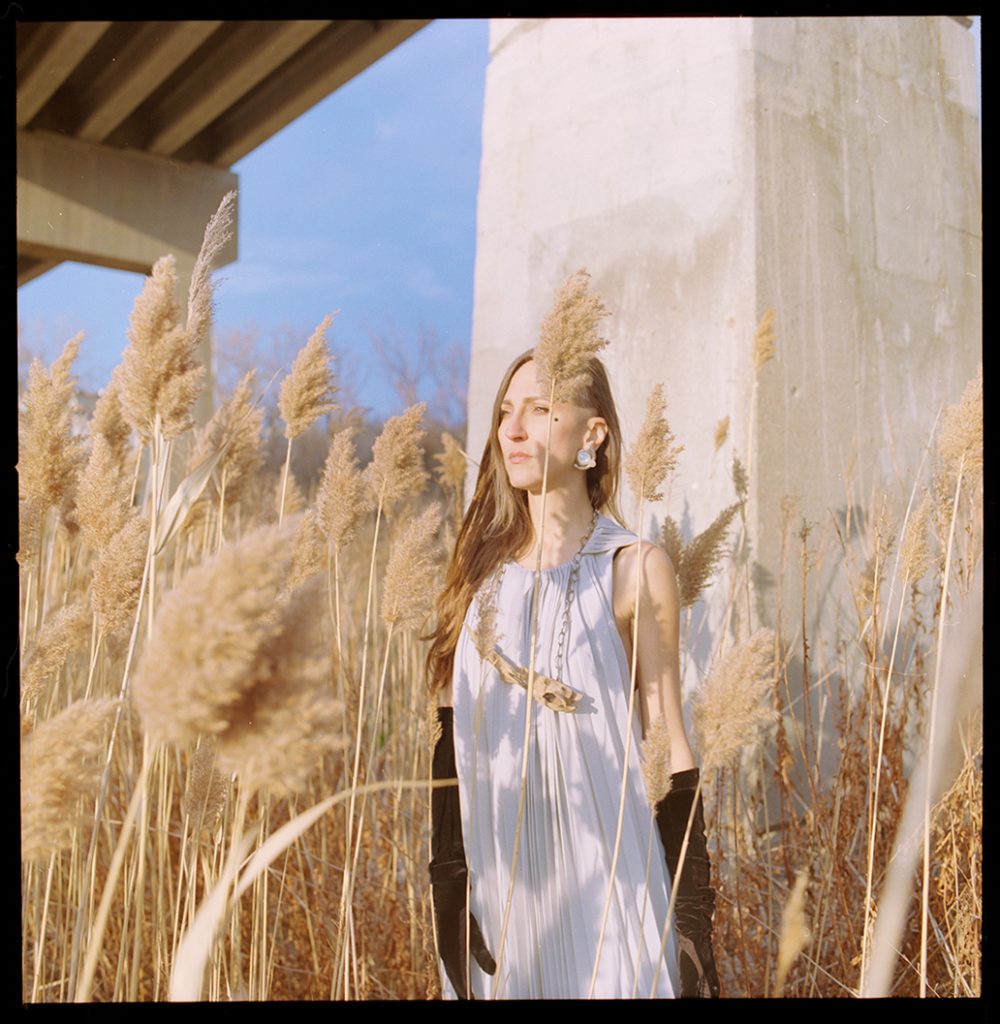Every moment of the day, dawn is peaking over the horizon somewhere on the planet. This is something that Jenny Kendler, who is deeply focused on being close with nature, has thought a lot about. What does dawn sound like? Her work The Playhead of Dawn meditates on what this chorus would be if you could travel the world as it was happening: one bright and fluid melody of diverse birds, one planet with a perpetual song.
Kendler, who is based in Chicago, has dedicated her life to creating artworks that take sometimes overwhelming, macro environmental ideas—like the soundscape of dawn around the world—and transforming them into emotional encounters. An ecological artist, environmental activist, and forager, Kendler has been engaging with climate questions at the intersection of culture long before it became a buzzy subject in the art world.
But she’s planning to hold its powers to account too. Since 2021, Kendler has been an organizer of a new association called Artists Commit, which aims to put pressure on institutions and artists to become climate-conscious entities.
Artnet News spoke to Kendler about the responsibility she feels for the planet, and how not to lose hope in the face of what looks like a dire future.
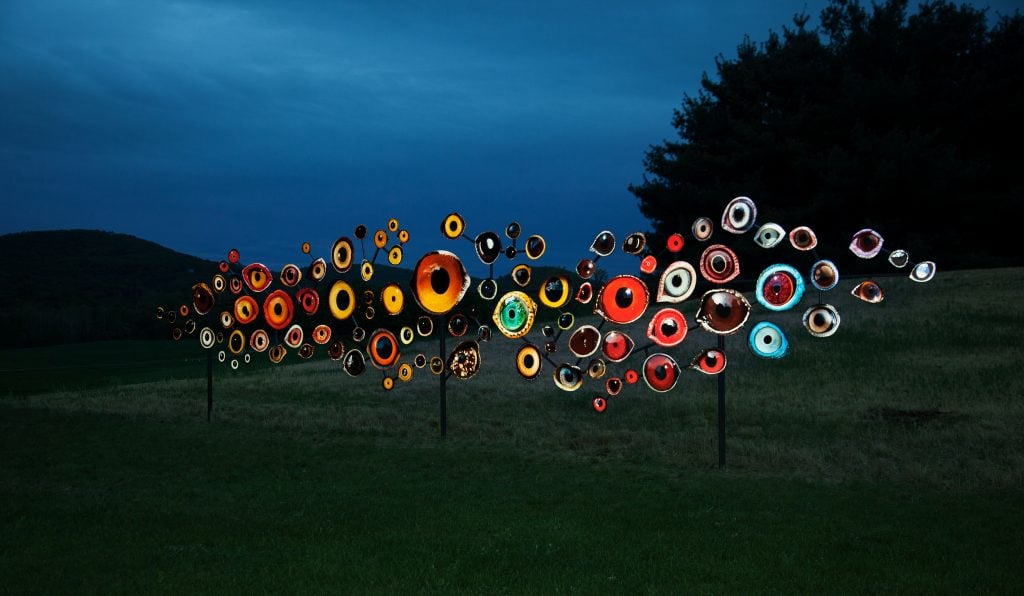
Birds Watching (2018) as part of Indicators: Artists on Climate Change at Storm King Art Center.
Which takes priority: your environmental concerns or your artistic pursuits? Where do they merge or split?
They have to be twinned for me in order for a project to be successful. It’s walking that very narrow line where neither part subsumes the other, so that it doesn’t become a didactic thing only in the service of activism, nor an art project that’s just talking to the choir. That tension in the work is what is actually really exciting to me. I definitely was one of those kids that always wanted to be an artist. I’m not sure exactly where it came from, because my father is a scientist and my mother’s a physician. I was always obsessed with the natural world. I knew about where some birds had their nests and I would come and check on the eggs every morning on my way to school.
I question myself all the time about whether I would be making a bigger impact if I was working at an NGO, but I also believe one should really work to one’s strengths and that’s also about doing something that brings you joy and personal fulfillment because then your work will be more impactful. I’m incredibly fortunate that I get to do what nine-year-old me wanted to do.
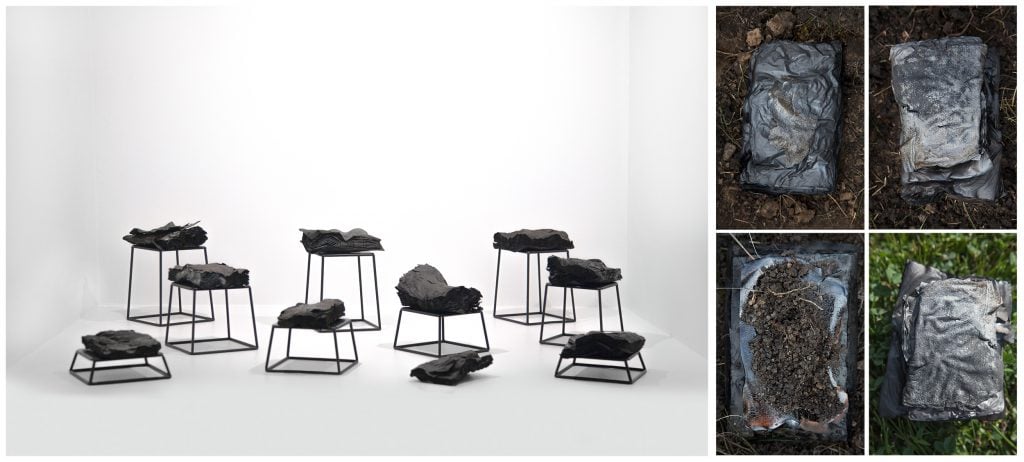
Underground Library (2018) exhibited as part of Indicators: Artists on Climate Change at Storm King Arts Center and being sequestered at the Russel Kirt Prairie. Credit and courtesy the artist.
Do you feel like that’s why you have even more responsibility than an artist working in a rural area in the Global South?
I was raised as a secular Jew and there’s always been this kind of cultural assumption that the more gift you’re given, the more you need to give back through the concept of tikkun olam, which means repairing of the world. I’ve always thought that I’ve been lucky in a lot of respects in my life. Many of us in in the West are. We have more of a responsibility to use that to try to create some positive cultural change. And I’m incredibly fortunate to be able to do that through being an artist.
Art can open people’s minds in a way that hard data or reporting cannot. Why is it important to bring in an intimate, digestible perspective?
I also use the word “intimate” to describe my work and it feels really important. There is this unique thing that art can do that other ways of communicating can’t necessarily do. If the central challenge is to move beyond extractive capitalism and find a new way of relating to the more-than-human world, really what we need to do is change culture and values. It is very hard to do. It’s very rare that people encounter something that actually changes the way that they feel about the world. But art can do that. I’m always looking for a place of emotional resonance, which gives the audience a chance to have this novel emotional encounter with subject material that hopefully might actually change them. I do use a lot of strategies like intimacy, a sense of the visceral, bodily, or sensory encounter. I’m really interested in emotionality. A lot of my work is about memorialization or how we encounter loss or bear witness.
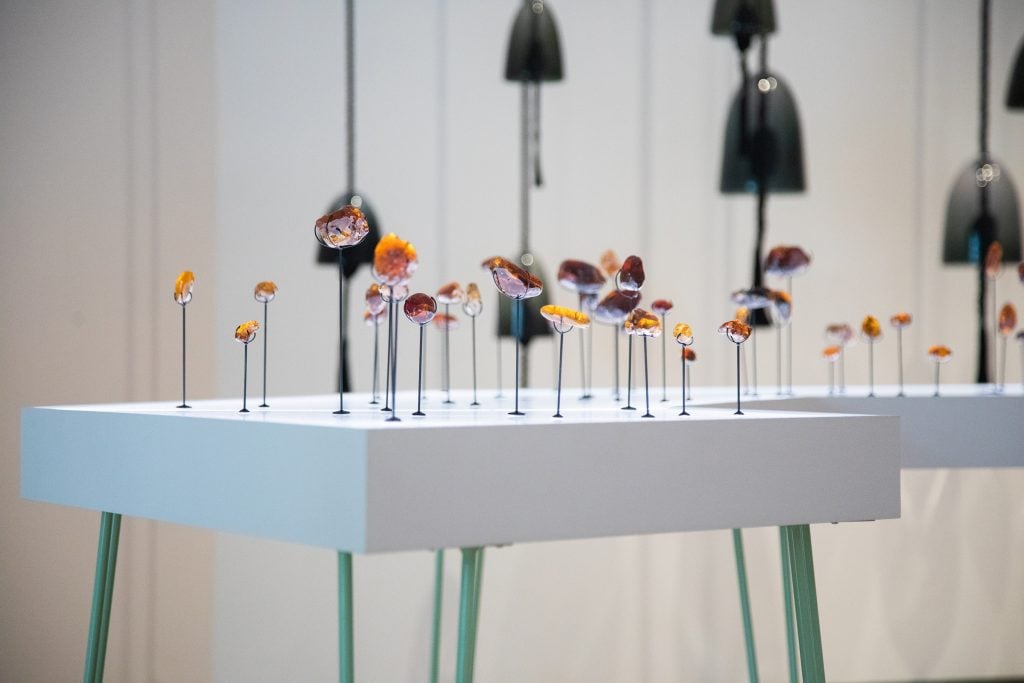
Amber Archive (2020–ongoing) as part of Jenny Kendler: The Long Goodbye at The MSU Broad Museum. Credit and courtesy the artist
How do you deal with carbon outputs in your studio practice?
With that project, it was not a tremendous amount of energy use. With Artists Commit, this new initiative that I’ve been working with, it’s becoming more important to me to think about energy usage and how to track that through my process. Tracking carbon is really exciting. With Artists Commit we’ve developed a really exciting process called the Climate Impact Report, which is a very simple and flexible tool that artists, exhibitors, galleries, and museums can use to track how much carbon they’re emitting through the production and exhibition of an artwork. It also looks into waste streams, which are really important. Really key as well is to think about human impacts, so that we’re not just focusing on the environment, but we’re also thinking about it in an intersectional way.
What I think is useful about that tool is that it can be used by an artist in graduate school who’s just making one project and wants to see what they’re emitting, but it can also be used by a huge institution, like in the case of Artists Commit, we just released these reports with Tate Modern, with MOCA, and with Hauser and Wirth. The reason that we’ve come up with this in particular is because once you see your emissions, you can’t unsee it. We’re really interested in cultural change. The art world has unique structure: if you change the minds a small amount of people, you can actually really change the whole art world. There’s a lot less bureaucracy. People tend to have a lot more power to implement new strategies. All of us organizers are going to be starting to incorporate mention of this report process when we’re doing our artists talks. The idea is that this should become very natural.
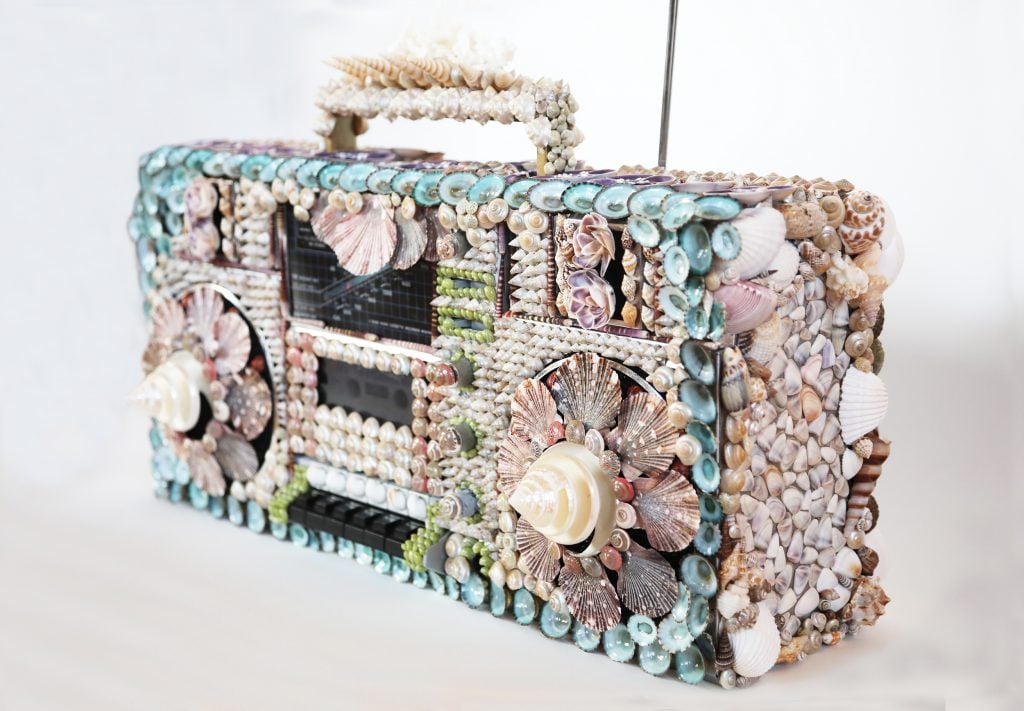
Forget Me Not (2020). Vintage boom box, sustainably-sourced shells, adhesive, cassette tape and looped audio. Credit and courtesy the artist
Do you feel encouraged by the changes that you see in the art industry in recent years?
I think that it’s complicated. It’s heartening to see how quickly when the art world wakes up to an issue things can change. I think that there’s been tremendous movement around the struggle for racial justice and equity for workers. It is great to see people being more conscientious about who’s on the boards of art museums, and for us to become more aware of culture washing. I think that the art world is still a really complicated place. I’m deeply troubled by how imbedded it is in late stage consumer capitalism. Are you bored of Louis Vuitton bags? Try contemporary art. It’s a real bummer. That is not at all how I see what art’s role should be. But that’s a very big part of the art world. I don’t see those aspects shifting anytime soon, but I also hope that because artists are oftentimes uniquely engaged with the work of healing the world that we can hopefully leverage towards positive change.
Can you share what you have coming up in the next months?
One of the things that I’m most excited about is a long-term project that will likely take place in the fall of 2023 on Governors Island, New York. I’m very invested in public art and so I am looking forward to this. The project is going to have two main nodes to it, one of which involves growing sculptures in collaboration with oysters. I will be creating sculptures as pearls and introducing tiny 3D-printed replicas of famous Western statuary.
The second aspect will be to work with high schoolers on a series of workshops on climate grief and anxiety. We’ll be asking them to collect their tears and working with laboratories to test the chemical burden that is in the tears. We have a burden just by virtue of living on planet Earth. We will look at the similarities between drops of seawater from New York Harbor and the tears of students studying these bodies of water. It is very ambitious and it remains to be seen whether or not these things can be accomplished.
Do you have to have deep climate anxiety? And does this research and art practice help mitigate it or or does it make it worse?
I have been in a place of mourning for my entire adult life or maybe even longer. I don’t think it’s anxiety. I also have this deep belief in the resilience of the natural world. Nature doesn’t need us, we need nature. I have grief for what has already been irreparably lost and what will be lost inevitably. It’s just knit into who I am. But that’s what it is to be alive, right? Everything that we have, we lose. I think I just feel an additional sadness about the suffering that will happen for those who are the least responsible. But in the face of that, the only alternative for me is what Joanna Macy calls active hope. You cannot be passive and expect that someone else is going to do the work. That is not morally acceptable. The challenge is to find how we can each leverage our unique gifts and privilege to be able to do this work of repair of the world. It doesn’t make the grief go away, but it’s allows me to live with myself inside of the grief.
